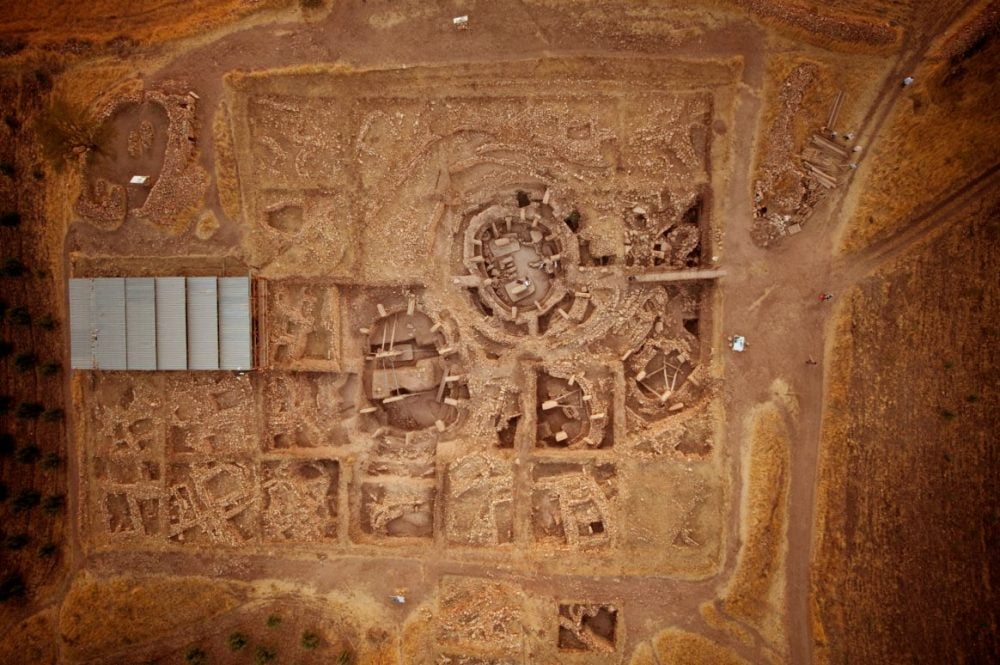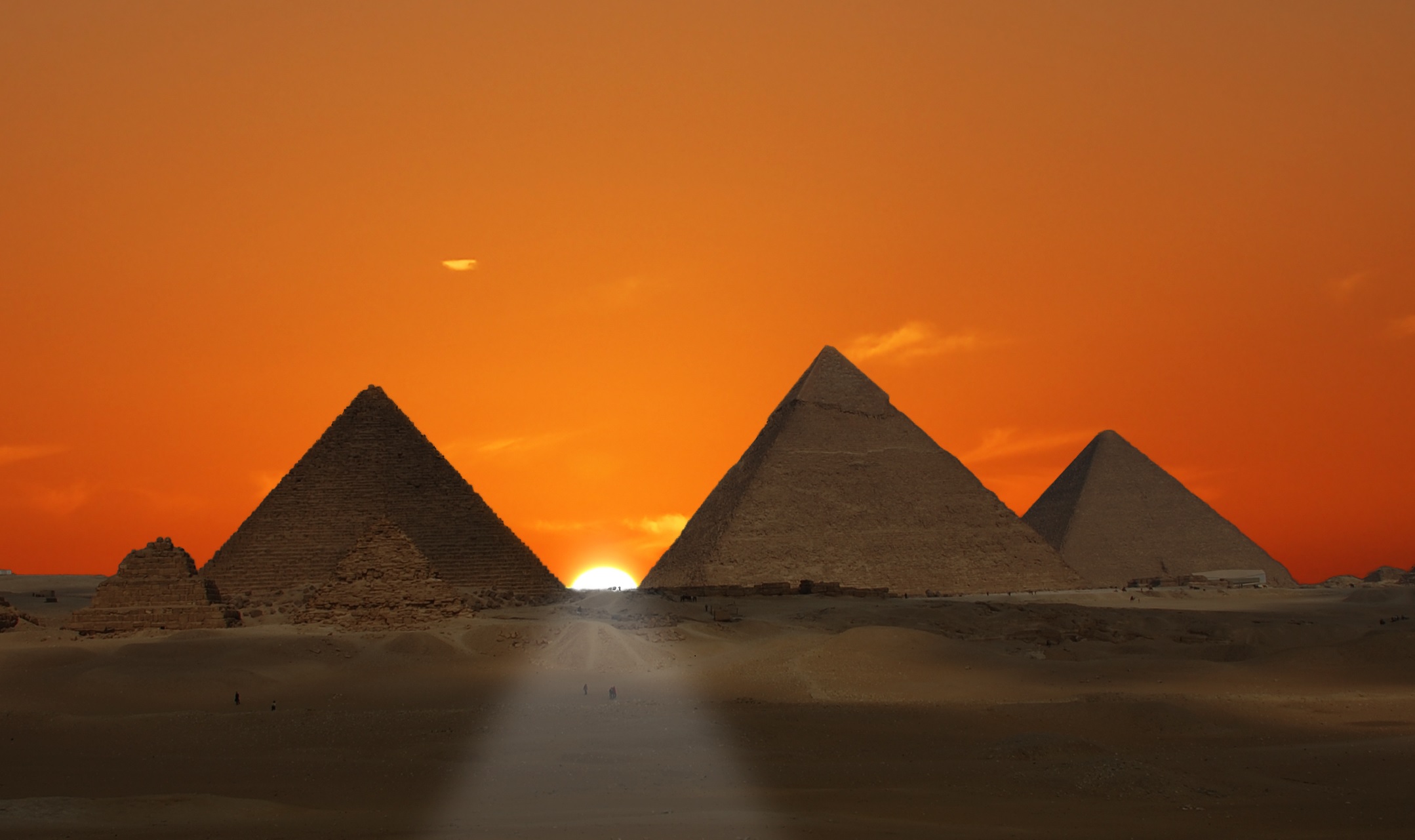Ancient Egypt and its Deeply Rooted Worship of the Sun

Although I have still not found the answers to those questions, I wish to believe that ancient cultures thousands of years ago did the same.
While looking for different answers, ancient people worshipped the stars. They worshipped the Sun, and they worshipped the Moon.
Ancient Sun Worship
If we look back at history, we eventually see that nearly all religions across the world that have arisen since time immemorial have, at one point, either worshiped a single deity or various forms. Even traditional beliefs and mythology seem to point to the worship of a single deity in its origins. However, we can also observe polytheistic traditions that seem to have evolved from an eroded form of monotheism.
The nature of man still ached for the need for a supreme creator and found comfort in the deities created in his own mind.
Therefore, it is unsurprising to find that, just as we look for answers today, ancient cultures looked to the stars looking for that omnipotent deity or gods.
When man observed eclipses, comets, meteorites, and other phenomena, he sometimes associated these extraordinary and powerful elements with surrogate deities.
But even before the worship of specific deities and gods, people started worshiping the celestial objects, the Moon, the Sun, and the stars and identified in them, great power.
Even today, the summer and winter solstices are celebrated around the world.
Throughout the history of civilization, there have been many ancient spiritual traditions that prospered, incorporating different understandings of a Creator deity and a connection to the heavenly bodies.
Cosmic objects such as stars, planets, the Moon, the Sun, comets, and meteorites were a source of wonder and admiration, and they remain so to this day.
Recently, when comet NEOWISE flew around the world, it offered mankind an unprecedented cosmic view, and countless people on Earth looked to the stars and observed it for months. Some of us even managed to take pictures of the celestial body as it made its way to the outermost limits of the solar system.

In a similar way, people marveled at observing certain events such as eclipses and the Northern Lights and other forces of nature.
While all of these objects are still as impressive as they were in ancient times, great advances in science mean that we are constantly exposed to new research on celestial bodies.
Thus, we are no longer astonished to hear that a new star or galaxy has been discovered, whereas ancient civilizations would have looked up at the sky and been perplexed by objects that he could neither reach nor understand.
Therefore it is unsurprising to understand that archaeologists have discovered a plethora of ancient structures that were intricately aligned with many heavenly bodies. These structures tell a story written stone; our ancestors worshiped the stars, the Sun, and the Moon.
Some examples are Stonehenge, which many people believe was constructed in ancient times to serve as a kind of astronomical observatory.
Of course, there are many other examples.
The stones at Stonehenge are aligned with the appearance of the Sun on the horizon at the summer and winter solstices when viewed from the center.
At that time, around six thousands years ago, the rulers would have used their knowledge of the solar cycle and calendar as a source of power and wealth, particularly if they were able to lead the people and tell them when to sow and when to reap crops. Stonehenge may have been not only the place where the sun was worshipped, but where the cosmos as a whole was seen as a deity.
Egypt and the worship of the Sun
In ancient Egypt, although the early ruling dynasties were likely monotheistic, with the passage of time, the Sun acquired great importance in the religion of the Egyptians and in the rank of the pharaoh.
Some of the hieroglyphs depict the pharaoh with the Sun on his head, the great Amon-Ra.
Amun was considered the supreme creator, while Ra was the ancient Sun God, so the two were combined as Amon-Ra.
A profound veneration of the Sun was present in ancient Egypt.
An example of this worship is dest described with the rule of Akhenaten, the heretic pharaoh of Egypt.

As I’ve explained in my article over at Curiosmos;
For the ancient Egyptians, the sun represented growth, heat, power, and light. This alone made the solar deities important. In Egypt, the cult of the Sun prevailed for centuries and its power was associated with many gods, including Horus, Ra, Wadjet, Sekhmet, Hathor, Nut, Isis, and Bat.
From the fifth dynasty, the local gods merge with Ra to create syncretic divinities: Atum-Ra, Min-Ra, or Amun-Ra. During the 18th dynasty, Pharaoh Amenhotep IV temporarily changed the polytheism that was practiced in Egypt, proclaiming a monotheism around Aten, represented by the solar disk, possibly to counteract the great influence of the clergy of Amun.
Akhenaten worked very hard after he took the throne of Egypt in removing the many gods of the kingdom and told the ancient Egyptians that there was only one god, the Sun god. He introduced them to the worship of a single god, represented by the solar disk known as Aten. The worship of the sun disk was so big that Amenhotep IV even changed his name to Akhen-aten.
After the death of Akhenaten, Tutankhaten, his son, succeeded him, and returned to the old traditions of the worship of several gods, and changed his name to Tutankhamun. (Hagen, p.47).
As I have explained in this article, in ancient Egyptian mythology, the perpetual cycle of the coming and setting of the Sun is comparable to the cycle of life and death.
The solar god Ra makes this diurnal journey aboard a boat called Mandjet or the Boat of millions of years. Ra’s perpetual journey knows no pause; at sunset, on the contrary, it only begins again. It is in another boat, called Mensenktet, in which he begins his underground journey, which he crosses during the twelve hours of the night before being able to be reborn in the morning.
The great temple complex of Karnak on the Nile is another ancient structure that seems to be specifically built and oriented in the direction of the summer solstice through the hypostyle hall and the adjacent festival hall.
Gerald Hawkins explained there is evidence that the temple was built aligned with the summer sun, and that the temple complex contained “hymns of praise to that god who appears at dawn.” (Devereux, p.164)
In fact, one of the temples at Karnak is named after Ra-Hor-Akhty, an ancient Egyptian name that translates as the “Sun bright on the horizon.”
In ancient Egyptian worship, Horus is the rising Sun, Ra is the noonday sun, and then Osiris (god of the dead) is the dying or setting Sun. Some even link Horus, Ra, and Osiris to the concept of the Christian Trinity (Gordon, p.657).
I also believe that much related to the Sun itself is embedded within the first Pyramid in the history of ancient Egypt. Although this is something I will discuss in future articles and my upcoming book, I firmly believe that the construction of Djoser’s Step Pyramid was greatly influenced by the setting and rising sun.
I believe that the royal architect of Djoser, a young man called Imhotep, was an early worshipped of the Sun–and was later deified–and saw much of his inspiration in building a Step Pyramid from the shape the sun took not he horizon as it rose and set.
The steps created by the horizon “merging” with the Sun was something that influenced the shape and Steps of Djoser’s pyramid in my view.
The Step Pyramid was Egypt’s most revolutionary monument and it appeared in the third Dnyasyty reign of Djoser, some 4,700 years ago. The successful completion of the Step pyramid forever changed Egypt and royal architecture, from the Third Dynasty onward.
I believe that the very origins of Egyptian civilization are rooted in the worship of the Sun.
Patterns in Comparative Religion, Mircea Eliade, Sheed & Ward 1993. The Encyclopedia of Myths and Legends, Stuart Gordon, Headline Books 1993. Secrets of Ancient and Sacred Places, Paul Devereux, Brockhampton Press, London 1993. Ancient Cities, Scientific American Special Issue, 1994. The Egyptian Book of the Dead, E. A. Wallis Budge, Cassel & Co, London 2001. Egypt – people, gods, Pharaohs, Rose-Marie & Rainer Hagen, Taschen, Koln, 2002.[:]




One Comment